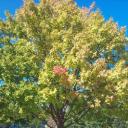Yahoo Answers is shutting down on May 4th, 2021 (Eastern Time) and beginning April 20th, 2021 (Eastern Time) the Yahoo Answers website will be in read-only mode. There will be no changes to other Yahoo properties or services, or your Yahoo account. You can find more information about the Yahoo Answers shutdown and how to download your data on this help page.
Trending News
what is the story of the kumbh and the mela?
spiritually speaking of course.
7 Answers
- 1 decade agoFavorite Answer
'Kumbh' in sanskrit refers to 'pot or pitcher' and 'mela' is 'festival'. Kumbha Mela, thus finds a meaning as a festival of the pot. The historic origin of the Kumbh Mela dates back to the vedic times.
The Khumba Mela takes place every three years rotating through Prayag, Nasik, Haridwar and Ujjain. An incredible spectacle, Khumba Mela is the time when the sages, masters, yogis, saints and sadhus come down from their sacred abodes in the Himalayas. It is the largest gathering in the world of people with a religious purpose, sharing knowledge and information about religion and other spiritual practices
The Real Story:
It is believed that once the gods(devtas) were cursed by Rishi Durvasa. This made them lose their powers, thus weakening their body and mind. To regain their old strength and vigour, the devtas planned to churn the primal ocean to extract the 'elixir of immortality', the 'amrit' or 'the water of life'. They approached demons (daityas) and persuaded them to perform 'Samudra Manthan' (churning of the ocean) to bring out the nectar. One who would drink the nectar would become immortal and therefore, most powerful and indestructible. Thus, gods and demons agreed to share the nectar once it was brought up from the depths of the ocean.
The Huge Tug Of War:
Finally, the churning of the ocean began with the Mandar mountain being used as the churning stone and the giant serpent to become the coiled rope for turning. There was a dispute as to who would take which side - the head or the tail - of the serpent. Finally the churning began with the gods catching hold of serpent's tail and the demons, its head. Then started the huge tug of war.
As the churning progressed, the ocean began to yield its treasures. A deadly poison was produced and Lord Shiva came forth to swallow the poison to save the creation. The universe was gifted with a celestial horse, a divine cow, a valuable gem, a magic moon, a musical instrument, apsaras or beautiful dancing girls, Lakshmi (the goddess of fortune), Vishvakarma (the divine architect and constructor) and then came the divine medicine man, Dhanvantri, with the coveted pot of amrit.
The Last Spell:
Seeing Dhanvantari with the pot of nectar, the gods and demons became anxious. The demons who were physically stronger than the gods forcibly seized the pot. The demons and the Gods fought over the pot for twelve days and twelve nights (equivalent to twelve human years). Finally, Lord Vishnu, disguising himself as an enchantress, took the pot of nectar from the demons and passed to Jayant, Lord Indra's son, who assumed the form of a large bird, flew off with the jar. Some drops of the nectar fell on his way at four places: Allahabad, Haridwar, Trimbakeshwar and Ujjain. Each of these places became the holy pilgrimage sites for Kumbh Mela.
- Anonymous5 years ago
each river has been assigned a dwadasa varsha so that the mela of that particular river is performed known as pushkara( the star associated to that river conjugates with another star , details i donot remember and this happens only once in every 12 years)similar to the case of ganga According to Indian astrology, it is celebrated when the planet of Brihaspati (Jupiter) moves into the zodiac sign of Aquarius or Kumbha pushkara = 12 years several religious ceremonies and rituals, Kumbhas (pots) or Kalasha filled with water and leaves and decorated with intricate motifs, sometimes with ornaments, play an important role in ancient India. These rituals still survive in India The observance of Kumbh Mela dates back many centuries in Ancient India, to the Vedic period, where the river festivals first started getting organised. In Hindu mythology, its origin is found the one of the popular creation myths and the Hindu theories on evolution, the Samudra manthan episode (Churning of the ocean of milk), which finds mention in the Bhagavata Purana, Vishnu Purana, the Mahabharata and the Ramayana written evidence of the Kumbha Mela can be found in the accounts of Chinese traveller, Huan Tsang or Xuanzang (602 - 664 A.D.) who visited India in 629 -645 CE, during the reign of King Harshavardhana
- Anonymous1 decade ago
There are two important stories regarding the origin of Kumbh Mela. Both of them are traced back to the Puranas. The most important and widely accepted myth starts in the Bhagavatha Purana.
Puranas are filled with wars between Devas (demigods) and Asuras (demons). The Devas always have the upper hand but occasionally due to some curse or misdeeds the Devas lose this upper hand.
Lord Indra, the king of Devas, was once cursed by Sage Durvasa and as the result of this curse, Demons overpowered the Devas.
To find a solution the Devas approached Lord Vishnu. Lord Vishnu advised them to obtain Amrut - ‘the nectar of immortality.’
To obtain the Amrut the Devas should churn the ocean. Mandara Mountain agreed to be the churning rod and Vasuki, the serpent agreed, to be the rope. To churn the ocean the Devas needed the help of Asuras as the Devas could only hold one-end of the rope. But Devas was not willing to share the Amrut with Asuras. Finally, without any other choice the Devas agreed to share the Amrut with the Asuras.
Churning started and the ocean started to yield divine gifts. Amrut was the last to appear. Dhanvantari, the physician of the gods, appeared with Amrut. The Asuras took the Amrut and started to run away. A fight between the Devas and Asuras ensued.
All the myths associated with Kumbh Mela are the same till this point. But the story changes from this point in different myths.
First Version
In Skanda Purana, it is suggested that Indra’s son Jayanta got hold of the Amrut during the fight between the Devas and Asuras. He started to run away with it. The demons started to chase Jayanta around the earth. The chase lasted for 12 days or 12 human years. One day of devas is equal to one human year. During this time, the nectar spilled at Allahabad, Haridwar, Nasik and Ujjain.
Second Version
This legend of Kumbha Mela appears in Vishnu Purana, Brahmananda Purana, Padma, Agni PuranaMahabharata Ramayana. It suggests that as soon as Dhanvantari appeared with Amrut, Lord Vishnu passed it to Garuda – the mythical bird and vehicle of Lord Vishnu. Asuras chased Garuda for 12 days or 12 human years. And Garuda stopped or the nectar spilled at Allahabad, Haridwar, Nasik and Ujjain.
- S A AyalaLv 71 decade ago
i think this question was raised earlier and answereed by several scolars in YA
Kumbha (Kumbha means pot) Mela (means fair) is a sacred Hindu pilgrimage that takes place at the following four locations of India:
Prayag, Allahabad (in the state of Uttar Pradesh) at the confluence of three holy
rivers - Ganga (Ganges), Yamuna and Saraswati
Haridwar (in the state of Uttar Pradesh) where the river Ganga enters the plains from Himalayas
Ujjain (in Madhya Pradesh), on the banks of shipra river, and
Nasik (in Maharashtra) on the banks of Godavari river.
as per hinduism , each river gets its mela/pushkara once in 12 years , depending on the ruling planet enters the relavant raasi/jodiac sign
for ganga According to astrologers, the 'Kumbh Fair' takes place when the planet Jupiter enters Aquarius and the Sun enters Aries.
The pilgrimage occurs four times every twelve years, once at each of the four locations. Each twelve-year cycle includes the Maha (great) Kumbha Mela at Prayag, attended by millions of people, making it the largest pilgrimage gathering around the world.
the calculation of 12 year circle for each of the above sacred spots are
The Kumbh Mela lasts for more than a month and is determined by astrological calculations.
Each location – Allahabad, Nasik, Ujjain and Haridwar – will have a Mahakumbh Mela or Kumbh Mela once in 12 years.
At Allahabad in the Hindu month of Magha (January-February) - 1989, 2001, 2012, 2024….
At Haridwar in the Hindu month of Chaitra (March-April) - 1986, 1998, 2010, 2021….
At Nasik in the Hindu month of Bhadrapada (August-September) - 1991, 2003, 2015…
At Ujjain in the Hindu month of Vaisakha (April-May) - 1992, 2004, 2016…
During the twelve year cycle, there is an Ardh Kumbh Mela. You may call it the half Kumbh Mela as it takes place during the sixth year of the cycle.
Devout Hindus believe bathing in the Ganges will cleanse them of their sins and free them from the cycle of life and rebirth.
as i have mentioned that each river gets teh pushkaras every 12 years , the details of which are as under
pushkara takes place once in 12 years when Jupitar (Brishaspati) enters a particular zodiac. Here are the names of 12 rivers that play host to Pushkaram or Pushkara – the river festival.
Ganga River
Narmada or Reva River
Saraswati
Yamuna or Jamna
Godavari
Krishna
Cauvery or Kaveri
Bhima or Bhimarathi River
Pushkaravahini
Tungabhadra
Sindhu or Indus
Parineeta (Sapranitantasi)
- How do you think about the answers? You can sign in to vote the answer.
- 1 decade ago
You are not gaining anything by knowing and pracitcing in kumba mela - hindu pilgrimage practiced in India.
Your solution to get rid of SIN is by accepting the one the Veda's explain -
"the one who received bruises on 5 places, We worship you" You browse thru history who your Veda is spekaing about. IT is JESUS CHRIST
If u dont accept Jesus Christ, u cant get redemption from sin. Your veda tells it. Will you obey and prepare yourself for heaven or will you reject and face hell? upto you.
- Anonymous1 decade ago
Kumbaya, my lord, kumbaya
Kumbaya, my lord, kumbaya
don't know, my lord, kumbaya
Sorry about that, kumbaya





